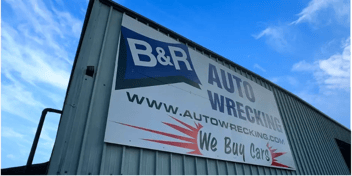The Canadian economy relies heavily on two pillars: immigration and small businesses. Despite their crucial roles, recent government actions have made it more challenging for small businesses to thrive. A notable change is the increase in the capital gains tax, which took effect on June 24, 2024. This tax impacts a broad spectrum of investments, including real estate, stocks, and business interests.
Capital gains tax is a levy on the profit from the sale of an asset. The recent increase means business owners must surrender a larger portion of their profits from selling business assets to the government. Here's a breakdown of the changes:
- Before June 24, 2024: The inclusion rate for capital gains was 50%, meaning half of the capital gain was taxable
- After June 24, 2024: The inclusion rate has risen to approximately 67%
To mitigate these challenges, one potential solution is adopting a tax rule similar to the United States' 1031 exchange rule.
Understanding the 1031 Exchange Rule
The 1031 exchange rule, named after Section 1031 of the U.S. Internal Revenue Code, allows investors to defer capital gains taxes on the sale of an investment property, provided the proceeds are reinvested in a similar property within a specific timeframe. This rule is widely used by real estate investors in the United States to defer taxes and grow their investment portfolios more efficiently.
Potential Benefits for Canadian Small Businesses
- Enhanced Capital Retention
One of the primary benefits of adopting the 1031 exchange rule in Canada would be enhanced capital retention for small business owners. By deferring capital gains taxes, business owners could retain more of their profits from the sale of assets. This retained capital could then be reinvested into other business opportunities, facilitating growth and expansion without the immediate tax burden. - Increased Investment in Business Assets
Small businesses often need to upgrade or replace equipment, machinery, and real estate to remain competitive. The 1031 exchange rule would encourage business owners to reinvest in newer, more efficient assets without the deterrent of a hefty tax bill. This increased investment in business assets could lead to higher productivity and profitability. Studies by the FEA in the US shows that when engaged in like-kind exchanges more capital is invested into the replacement property in comparison to non-tax motivated acquirers. Consequently, companies then generally take on less debt which decreases the overall risk in the financial system. - Fulfilling Expansion Needs by Combining the 1031 and Sale Leaseback
The combination of a sale leaseback and subsequent 1031 exchange is another great tool for small businesses that would allow them to sign a long-term lease on their current facilities, while reinvesting the real estate proceeds into a new facility without any additional tax burden. This is an efficient strategy when the business has outgrown their current footprint, or they simply want to continue expanding without having to take on expensive debt. - Stimulating the Real Estate Market
The real estate market plays a crucial role in the Canadian economy. By adopting the 1031 exchange rule, the Canadian government could stimulate more transactions in the commercial real estate sector. Small businesses, in particular, would benefit from the ability to upgrade their premises or relocate to more strategic locations, fostering a more dynamic and competitive business environment. - Encouraging Long-Term Planning
The ability to defer taxes on the sale of assets would encourage small business owners to think long-term. Instead of making decisions based on immediate tax implications, business owners could plan for sustainable growth and strategic reinvestment. This shift in focus could lead to more stable and resilient small businesses. Additionally, it can be beneficial for business owners when looking to retire, through selling their real estate alongside their business sale, while rolling over the proceeds into investment properties for stable future income throughout their retirement. The Ascension team members have successfully executed this strategy for retirees in the US, diversifying their income stream into a combination of higher grade and/or higher yielding assets tailored to their needs.
Job Creation and Economic Growth
When small businesses grow and expand, they create jobs and contribute to overall economic growth. By enabling business owners to retain and reinvest capital, the 1031 exchange rule could indirectly lead to increased employment opportunities and a more robust economy. This potential for job creation is particularly important in regions where small businesses are the primary source of employment. A report by EY supports this theory, as their study found that 1031 exchanges supported 976,000 jobs and created $48.6 billion of labor income alongside $97.4 billion of value-added GDP in 2021 for the US economy.
Conclusion
Adopting a 1031 exchange rule in Canada holds significant promise for boosting small businesses. By allowing business owners to defer capital gains taxes and reinvest their profits, the rule could enhance capital retention, stimulate investment in business assets, and foster long-term planning. Ultimately, these benefits could lead to job creation and economic growth, strengthening the backbone of the Canadian economy. As policymakers consider ways to support small businesses, the 1031 exchange rule presents a compelling option worthy of serious consideration.





.png?width=352&name=Sale%20leaseback%20(1).png)
Leave a Comment